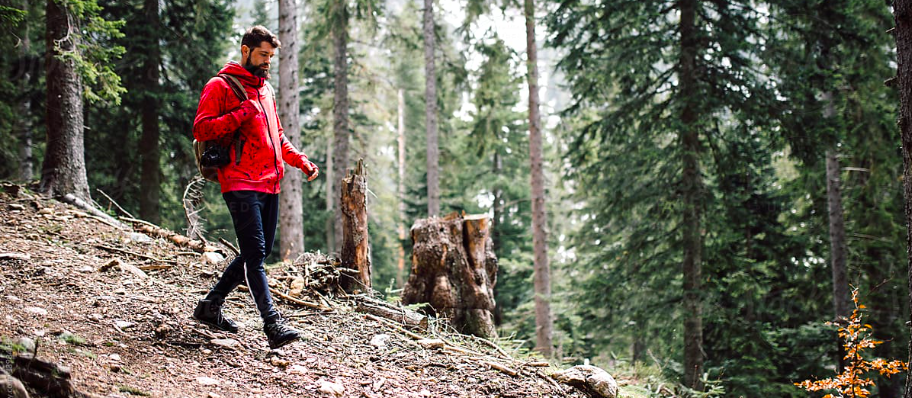Brian had been on many hikes before, but nothing like this one.
His early walks in the woods were adventurous, each bend in the trail revealing a new animal, a creek, or a brightly-colored leaf floating to earth. He didn’t always know where he was going, and that scared him at times, but he kept moving forward in spite of the worries.
Later, he moved on to day hikes and exploring new trails, with Amicalola-to-Hike Inn and others bringing more adventures. He worked up to longer treks, learning about hiking along the way. He wasn’t sure what trails he liked best, so he experimented trying to figure it all out.
But this trip was going to be different. They were taking on the Appalachian Trail: a 2200-mile, 6-month marathon through 14 states from Georgia to Maine. It was time to get serious and, deep inside, he wondered if he had what it takes to handle a journey like that.
The First Part of the Journey
At Springer Mountain, Brian cajoled the group to get going. Inside, he was excited about proving something—not sure what, or to whom—and he wanted to get there, which meant getting going. It seemed important to him for some reason to show the others that he could accomplish something significant.
Along the way, he re-learned how easy it was to get lost. And that when you can’t see far down the trail, you advance thoughtfully, searching from one white blaze to the next. He saw how important it was to have buddies to encourage and help each other along the journey.
After a while, the weeks began to blur in the heads-down quest for the next trail marker, and the beauty of the woods faded in the background. Challenges got worse: unexpected uphills, streams to traverse, a twisted ankle, dwindling supplies. Hardest to take were wrong turns, sometimes going miles before realizing the mistake, and struggling with how hard it was to turn around.
Trudging through the grueling middle third of the Trail, all he could think was, “Why am I doing this?” But, he pushed forward, wondering if the goal of “doing the A.T.” had become too consuming. Until, somewhere in eastern Pennsylvania, that familiar sinking feeling returned.
Once again, they were lost.
The Rest of the Journey
Which is when he appeared, a bearded hiker camped in a small clearing at a trail crossing. After swapping hellos and stories, Brian swallowed his pride and asked for help, “Which way do we go from here?” “That’s easy,” the man said. “Follow me.”
The next morning, they broke camp, their new friend guiding the way. Oddly, Brian felt relieved to let go of the need to control everything. And he enjoyed their new companion as he winsomely taught them about hiking, eating off the land, and the plants and animals they encountered. After a while, Brian learned he could count on this guy, and they happily agreed to finish the trip together.
Slowly, the journey got better, and the sense of adventure returned. Brian stopped thinking of how far they had to go and took it a step at a time, appreciating the woods again. Also enjoying his buddies, rediscovering why he had wanted to travel with them in the first place.
He still wanted to conquer the A.T., but the journey became more than that. He had a guide, and the destination would take care of itself if he did what he was supposed to. He found purpose in the journey itself. He felt weary at times, but each day’s hike was a good one.
Until the day they crested a ridge and spotted Mount Katahdin—the end of the Trail—in the distance. In the impending finality of that sight, the journey came into focus: the tough times and the good, the camaraderie of friends, their trusted guide, the lessons learned, and the reasons why. Mysteriously, it now all made sense.
Question: What struck you most about the parable of “The Journey”?
Next Right Step: Read the STEPS Journey Blog article titled “The Meaning of the Journey.”

